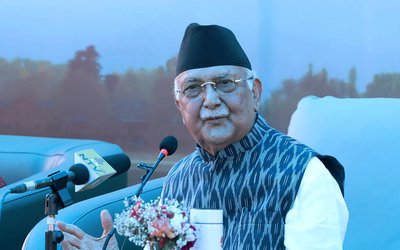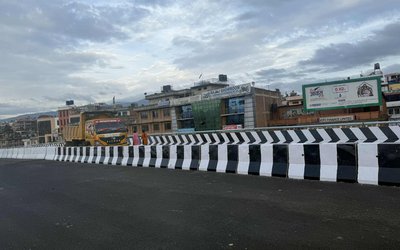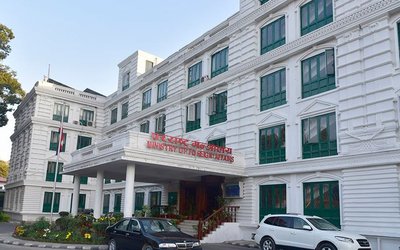More on News





Nepal’s planners, policy makers and intelligentsia are terribly mistaken to consider that the benefit to accrue from our major water resources storage projects is mostly electricity generation, whereas the irrigation benefit could be ignored. They seemed to be completely unaware of the vast studies of our water resources projects carried out in the past. The past detailed feasibility studies have clearly established that the irrigation benefit to accrue to our country from large storage type projects not only would be comparable but it could even be far exceeding the power benefit. Let us take the case of the Kankai Storage Dam Project. According to the detailed feasibility study carried out under the grant assistance of then West German Government in 1980 the annual benefit to accrue from hydropower generation is only US $ 7.24 million whereas the annual irrigation benefit was found to be US $ 31.46 million. The actual net irrigation benefit to accrue from other large multipurpose projects like the West Seti Project, Karnali (Chisapani) Project etc too are comparable to their power benefit.
Economic Significance of Water Export
Our country in recent years is kept in complete ignorance of the vast opportunities to produce abundant electricity far more than what we would be able to consume in foreseeable near future at relatively small capital investment or even almost free of cost, just like the way the Canada did in implementation of the Columbia hydropower projects, or the Kingdom of Lesotho has also done in implementation of the Lesotho Highland projects. The Kingdom of Lesotho, despite being one of the most backward countries of the Africa in socio-political awareness, has succeeded in building hydropower project free of cost, along with receiving in perpetuity annual royalty by using the proceeds of the sale of the regulated water supplied to the South Africa.
Market for Water Export
Except for the Sun-Kosi, Kankai and Bhalubang (West Rapti) storage projects, the irrigation potential of all other big storage projects, like the Karnali, Kosi, West Seti Projects, are too large to be exploited wholly within our own country. Thus the possibility of water export must be explored to maximize benefits accruing to our country from such large storage type projects.
There is a ready market for export of water to India. According to the current international practices the amount due to the water exporting country is paid in terms of a certain reasonable percentage of benefits accruing to the water importing country. This type of benefit is called the downstream benefit. At present Canada is receiving 50% of the net downstream benefit from the USA. Similarly the Kingdom of Lesotho is receiving 56% of the net downstream benefit from the South Africa.
India Ready to Buy
Nepal’s long years of persistent efforts to recover its share of downstream benefits has already produced concrete results. Few years back the Bajpai Government had constituted a high level commission to recommend Indian Government suitable ways to pay royalty to Nepal for regulated water flowing across the border into India. Unfortunately our recent governments are deliberately shutting their eyes to this issue extremely vital for bolstering the economy of our country and also to provide our people cheap electricity in abundance. Needless to explain that the implementation of any of the storage projects like the West Seti or the Budhi-Gandaki project without reaching an agreement with India about the sale of regulated water would deprive for ever our country the opportunity to obtain in perpetuity huge sums in annual revenues.
Sun-Kosi Project to take Priority
The implementation of a large storage type hydro project solely to meet our own demand for power can not be justified prior to reaching an agreement to recover a certain reasonable percentage of downstream benefits accruing to India if the irrigation potential of such project is too large to be fully exploited within our own country. However, Government could now select a project such as the Sun-Kosi diversion storage project or the West Rapti (Bhalubang) storage project, which are comparable to the West Seti Project in size, to meet our demands for power in near future. In addition to power, those two projects would have provided enormously large irrigation and flood control benefits within Nepal itself.
Suicidal Decision
It is quite shocking that very recently the Ministry of Water Resources has decided to implement the Dudh-Kosi Storage Project that would considerably limit the area of the lands to be irrigated by the Sun-Kosi Project in Nepal. Unfortunately none of our water resources related private as well as public institutions have raised their voice against this government decision. Even our main political parties and also the Terai based political parties claiming to represent the interest of the Terai are not at all seen to worry over such dreadful decision to ruin the irrigation prospect of the Eastern Terai. Apart from generation of cheap electricity and irrigation of almost the whole of Eastern Terai from Birjung to Sapta-Kosi, the Sun-Kosi Project could be helping to save the life and properties of tens of thousands of people living in Sunsari, Morang and Saptari districts by controlling the maximum discharge, together with high sediment flow of the Sapta-Kosi River.
In Conclusion
By now Nepal would have been able to accelerate industrial development across the whole country primarily based on cheap electricity produced by taking the comparative advantage of the vast hydropower potential of our water resources, if we had truly abided by the recommendations of the World Bank, FAO/UNDP, JAICA, GTZ etc, which are based on detailed feasibility studies. It is a great misfortunate that our recent governments instead of capitalizing upon the comparative advantages of our water resources projects are going ahead to kill even those most attractive water resources projects that could play great role in our country’s quick economic development in general and in providing abundant cheap electricity in particular. There is an acute urgency that the full attention of the entire civil society, INGOs and government organizations be drawn to save our water resources from being devastated.







